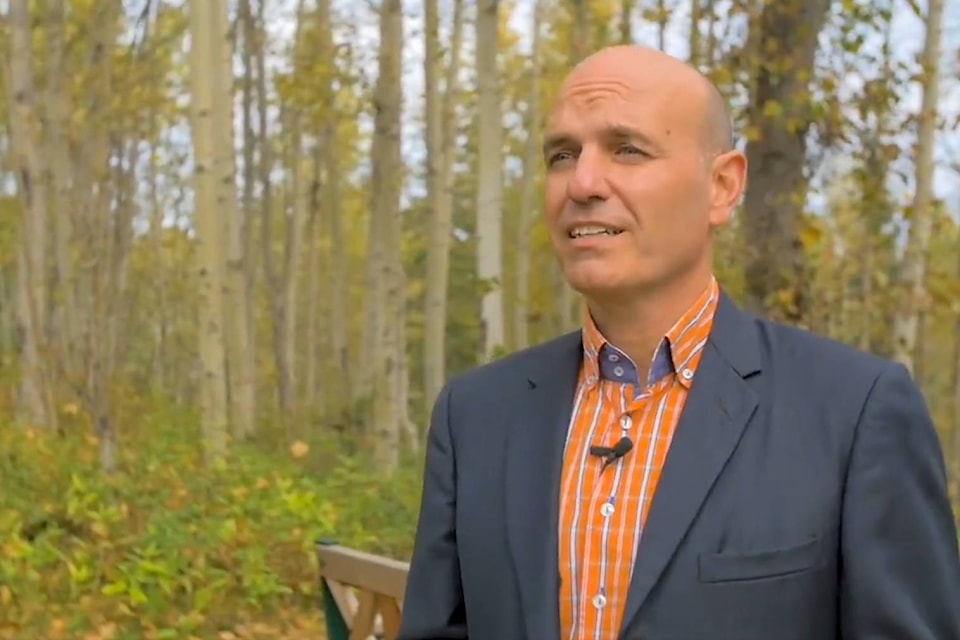As B.C. Premier David Eby prepares to unveil his cabinet Monday (Nov. 18) a key question looms above his choice: Who will represent the interior regions of British Columbia?
Five New Democrats won seats outside Metro Vancouver and Vancouver Island: Brittny Anderson (Kootenay Central), Tamara Davidson (North Coast-Haida Gwaii), Steve Morissette, (Kootenay-Monashee), Randene Neill (Powell River-Sunshine Coast) and Harwinder Sandhu (Vernon-Lumby). Anderson and Sandhu return as incumbents, while Davidson, Morissette and Neill have entered the legislature as rookies.
Eby's first cabinet included a handful of rural MLAs holding senior portfolios, perhaps none more significant than Katrine Conroy, who served as finance minister, while representing Kootenay-West, which morphed into Kootenay-Monashee.
Conroy did not run again, while two of her cabinet colleagues from rural B.C., Nathan Cullen (Bulkley Valley-Stikine) and Roly Russell (Boundary-Similkameen) lost their seats as candidates running for the Conservative Party of B.C. painted large swaths of B.C. blue.
Key issues behind this success included concerns about healthcare, especially emergency-room closures and the state of the economy among others.
Eby himself has acknowledged an urban-rural divide in B.C. and has used two recent media appearances to reach out to rural voters as his party prepares to govern with a bare, one-seat majority.
So how can the incoming government accurately represent Interior B.C., a large region that includes several resource-dependent communities feeling the effects of the declining forestry sectors now bracing for additional hardships in the aftermath of the election of the United States, but also fast-growing communities like Kelowna?
"There (are) excellent people amongst that group of rural MLAs for the NDP," Nathan Cullen, out-going minister of water, land and resource stewardship and minister responsible for fisheries, said. "Making cabinet is part science, part art. In terms of people, it's about presence and policy for me."
He added that "simply having the right postal code" isn't enough.
"It's also about being here, understanding our communities and listening to the hopes and fears," he said. "So with that in mind, for a lot of those key portfolios (for rural B.C.) B��Ԫ������ַ� health, some of the natural resource ministries -- it is really about that person's commitment to getting on small planes and getting in cars and coming out and spending time in these communities."
This raises a related question: Should the new ministers for forestry, mining, potentially even health, given the prevalence of emergency room closures in rural communities, come from the Interior?
"No, not necessarily," Cullen said. "It's about experience and competence, that willingness to listen and work hard for the communities that are most impacted by the natural resource sector."
Looming behind the dearth of NDP representatives in B.C.'s Interior lies the question of culture, one brought to the forefront during the campaign as Conservatives won across rural B.C. won in part by questioning prevailing positions in urban B.C. around hot-button social issues like Sexual Orientation and Gender Identity 123 B��Ԫ������ַ� a framework first introduced by the B.C. Liberals in September 2016 B��Ԫ������ַ� and the perceived softness of the NDP when it comes to dealing with public safety and the perceived failure of decriminalization.
Another reminder came this week with the passing of former NDP premier John Horgan and the reminder of remarks Horgan had made in 2014. At the time, he said the party had "lost" its way when it came to speak to people in resource-based communities.
"We have become dependent on particular points of view, focused largely in the Lower Mainland," Horgan said in 2014. "If we are going to win, we need to speak to people, not just in a pandering way, but in a positive way to people in resource-based communities."
Based on results, Conservatives found a way to speak to people in such communities by pointing to defects in healthcare, but also promises to revive B.C.'s natural resource sector.
While declining relative to other sectors of the economy, economists like Ken Peacock of the Business Council of British Columbia have pointed out that natural resources of various sorts account for nearly half of all provincial exports abroad.
More immediately, natural resources play an outsized role in small communities. When a mill employing 300 people closes, it may not mean much to the economy at-large, but it could mean everything for people living in places like Fraser Lake or Vanderhoof.
The struggles of the NDP in rural B.C. also appears to be part of a larger re-alignment of blue-collar workers moving toward the right side of the political spectrum and white-collar professionals living in more affluent parts of the province, such as urban centres, moving toward parties on the left.
Russell, the out-going parliamentary secretary for rural development, meanwhile point to a larger tension between what he called the "old narrative" of rural B.C. as a place of resource extraction and something beyond it.
Traditional forms of resource extraction is a "huge part" of rural communities, he said.
"But there's so much more," he said. Rural communities have shown a lot of creativity over the years in dealing with various issues, yet this creativity does not get a lot of attention, he added.
Russell said the NDP's political opponents say the number-one job of government is to protect jobs in rural communities.
"I was like, well, that's part of it, but we want those places to thrive, right? There are a bunch of different ways to get there."
Cullen for his part said he is a "little cautious" when it comes to making recommendations to the incoming cabinet in dealing with rural B.C.
"I would say in general, though, I would not count the NDP out of rural B.C....pendulums swing."







